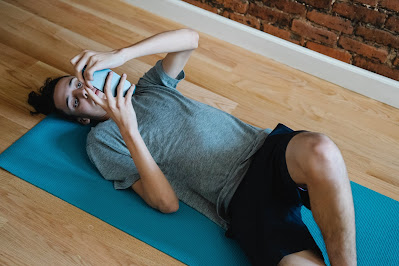Feeling and expressing gratitude is linked to better health, improved relationships, and increased happiness. Science shows that making thankfulness a regular habit can have transformative effects on well-being. In this post, we’ll explore some of the research behind gratitude and how we can cultivate it.
The benefits of gratitude
A growing body of research illustrates the positive outcomes associated with gratitude. Studies show that grateful people experience higher levels of:
- Happiness and life satisfaction [1]
- Optimism and positive emotions [2]
- Physical health and self-esteem [3]
- Spirituality [4]
- Empathy and reduced aggression [5]
- Productivity [6]
- Resilience [7]
Gratitude also helps strengthen relationships by making people more trusting, forgiving and supportive of one another [8].
One major area of research examines the link between gratitude and physical health. For example, an experiment found that keeping a gratitude journal leads to improved sleep, better exercise habits and fewer physical symptoms like headaches or coughs [3].
Other studies show that writing thank you notes lowers levels of stress-related biomarkers like cortisol. Practicing gratitude affects heart rate variability as well, which is associated with good health.
How gratitude achieves these benefits
Gratitude’s positive effects seem to stem from its ability to:
- Counteract negativity bias - Our brains have a natural tendency to focus more on threats than positive experiences. Expressing thanks overrides this instinct.
- Increase dopamine and serotonin - Gratitude stimulates the release of mood-boosting neurotransmitters like dopamine and serotonin.
- Strengthen self-image - By reflecting on the good things others do for us, gratitude helps us develop a more positive self-image.
- Trigger a sense of abundance - Focusing on what we appreciate counters feelings of lack and cultivates a mindset of abundance.
Ways to cultivate gratitude
Now that we’ve explored some of the science behind gratitude, here are tips for making it a bigger part of everyday life:
Keep a gratitude journal - Jot down a few things you're grateful for each day. Apps like Happier provide prompts.
Write thank you notes - Express thanks and appreciation to people in your life.
Integrate gratitude questions into conversations - e.g. “What good things happened today?”
Give compliments and praise - Notice what people do well rather than criticizing.
Savor the moment - Pause to appreciate positive everyday experiences.
Say grace - Offer words of gratitude before mealtimes.
Well... wrapping up!
The research clearly indicates that thankfulness is a pillar of health and wellness. By cultivating gratitude, we can lead more joyful, fulfilling and purpose-driven lives. Our friends, families and communities reap benefits too. Hopefully the information above provides some inspiration to express appreciation more often and unlock gratitude’s profound power.
References:
[1] Emmons, R.A., & McCullough, M.E. (2003). Counting blessings versus burdens: An experimental investigation of gratitude and subjective well-being in daily life. Journal of Personality and Social Psychology, 84, 377–389.
[2] Hill, P. L., Allemand, M., & Roberts, B. W. (2013). Examining the pathways between gratitude and self-rated physical health across adulthood. Personality and Individual Differences, 54(1), 92–96.
[3] Jackowska, M., Brown, J., Ronaldson, A., & Steptoe, A. (2015). The impact of a brief gratitude intervention on subjective well-being, biology and sleep. Journal of Health Psychology, 21(10), 2207–2217.
[4] Rosmarin, D. H., Pirutinsky, S., Cohen, A. B., Galler, Y., & Krumrei, E. J. (2011). Grateful to God or just plain grateful? A comparison of religious and general gratitude. The Journal of Positive Psychology, 6(5), 389–396.
[5] Kong, F., Ding, K., & Zhao, J. (2014). The relationships among gratitude, self-esteem, social support and life satisfaction among undergraduate students. Journal of Happiness Studies, 17(2), 477–489.
[6] Grant, A. M., & Gino, F. (2010). A little thanks goes a long way: Explaining why gratitude expressions motivate prosocial behavior. Journal of Personality and Social Psychology, 98(6), 946–955.
[7] Hill, P. L., Allemand, M., & Roberts, B. W. (2013). Examining the pathways between gratitude and self-rated physical health across adulthood. Personality and Individual Differences, 54(1), 92–96.
[8] Algoe, S. B., Haidt, J., & Gable, S. L. (2008). Beyond reciprocity: Gratitude and relationships in everyday life. Emotion, 8(3), 425–429.


































